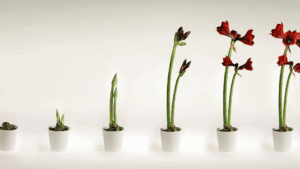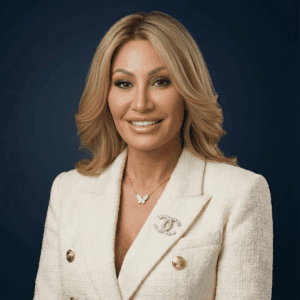Wanting Versus Needing: Why It Matters for Relationships
The concept of wanting versus needing goes beyond word choice—it’s a reflection of how people approach emotional security and fulfillment in love. Relationships anchored in wanting foster playfulness, curiosity, and growth, while those bound by needing are often characterized by tension, unease, and a nagging sense of lack. Wanting versus needing isn’t just theoretical; understanding it offers readers a powerful tool for recognizing patterns that may undermine their happiness. The distinction between wanting and needing is crucial in healthy relationships, as true intimacy thrives when partners intentionally choose connection rather than relying on dependency or fear.
Neuroscience reveals that when desire is chosen freely, the reward system fires in healthy anticipation, creating a cycle of joy and exploration that strengthens romantic bonds. If a relationship feels heavy or fraught with anxiety, consider whether you’re operating from wanting versus needing. Are you seeking your partner’s company to add richness to your life, or are you grasping for connection to alleviate inner discomfort? By examining these motivations, people gain clarity about what truly drives their choices—and can begin rewriting emotional habits that hinder authentic connection.
A healthy relationship involves two people who want, not need, each other—who choose to be together because it brings fulfillment, rather than a desperate attempt to soothe fear or avoid loneliness. Wanting versus needing encourages self-reflection, helping readers see themselves with honesty and compassion. With deeper insight, it’s possible to break cycles of unhealthy attachment and foster partnerships where joy, freedom, and meaningful growth flourish side by side. This path, supported by neuroscience, offers every reader hope for relationships that lift rather than drain, empowering you to transform the way you love and connect.
Fear-Based Need Versus Empowered Want
How Fear Impacts Relationships-The Fine Line Between Wanting Versus Needing
Many people mistake intensity or clinginess for genuine love, but neuroscience reveals that the distinction between wanting and needing has profoundly different effects on the brain. When a relationship is driven by need, fearful patterns emerge—obsessive thoughts, constant worry about being abandoned, and frantic efforts to “fix” or control a partner. The brain’s amygdala and stress response systems remain in overdrive, flooding the body with cortisol and keeping individuals on edge.
Recognizing the signs of fear-based need is crucial. Are you exhausted by trying to predict what your partner will do next, or terrified of being alone? This is a hallmark of needing, not wanting. Wanting versus needing reframes love as an act of maturity—embracing desire while letting go of the urge to possess or fix. Fearful relationships often result in cycles of argument, withdrawal, and painful reconciliation. The more one fears losing a partner, the less safe and authentic the connection becomes. Moving from needing to wanting restores balance, reduces fight-or-flight triggers, and makes space for joy.
Evolutionary Origins of Needing
In human evolution, needs served a proper survival function. Children clung to their caregivers, partners sought reassurance that they were safe within the group, and tribes protected their members through strong attachment. The instinct to distinguish between what is wanted and what is needed helped humans form alliances, ensuring survival amid scarce resources and unpredictable threats. Biologically, the drive for security wires the nervous system for vigilance—people prone to needing may unconsciously scan for danger, interpreting minor relationship challenges as existential threats.
Understanding the evolutionary roots of needing helps readers release self-judgment. These reactions aren’t weaknesses; they’re adaptations. However, in today’s world, where survival isn’t dependent on constant attachment, the distinction between wanting and needing offers a new behavioral toolkit. By seeing need as a remnant of past challenges, individuals can relax anxious vigilance and practice self-soothing. Love stops being a battleground when wanting replaces needing, allowing emotions to shift from fear to calm anticipation.
The Neuroscientific Difference: Circuits of Reward and Threat

Wanting as Motivation and Joy
The experience of wanting versus needing is hardwired in the brain’s motivation pathways. Wanting someone is an active and energizing experience—the ventral tegmental area (VTA) releases dopamine, which fuels anticipation, creativity, and positive risk-taking. Couples who operate from a state of wanting versus needing report deeper enjoyment and more frequent “flow” states during shared activities. This neural engagement makes relationships resilient to stress and boredom, creating a stable cycle of shared reward. Wanting versus needing guides couples toward experiencing healthy independence, as each person seeks personal growth and then brings that energy back to the partnership. Everyday rituals, laughter, and mutual encouragement are easier when both partners choose connection from desire rather than fear.
Needing as Survival and Stress
The alternative, needing, stirs up survival mode. The insula and putamen become hyperactive, vigilant for any sign of threat, abandonment, or disappointment. This often leads to tunnel vision—relationships revolve around safety, routine, and avoidance of discomfort, stifling growth and authenticity. Recognizing the difference between wanting and needing makes it possible to identify this pattern, offering readers a way to escape chronic stress responses. Those caught in need often report feeling empty or depleted, like they’re pouring themselves into a bottomless cup. Rewiring these circuits involves mindful awareness and frequent self-check-ins: what, truly, am I afraid of? Wanting versus needing empowers readers to transform survival strategies into thriving ones, cultivating relationships rich with nourishment and support.
Psychological Patterns: Wanting Versus Needing in Daily Life
Emotional Safety and Attachment
Emotional safety, the foundation of lasting intimacy, is deeply linked to the distinction between wanting and needing. When people want their partner instead of needing them, attachment becomes secure and joyful. A shift from needing to wanting dramatically improves communication, flexibility, and mutual respect. For many, the fear that drives needing can push loved ones away, whereas wanting invites closeness and reliability. Readers struggling with anxiety or control issues in relationships will find relief in practicing the art of wanting rather than needing; this fosters trust and new kinds of connection.
Fear-Driven Behaviors: Clinginess and Control
Fear-based need often leads to multiple layers of behavior—clinging, monitoring, and even emotional manipulation to hold onto a partner. The wanting versus needing mindset, however, introduces radical honesty and encourages a respectful space between partners. Such space nurtures growth, curiosity, and the freedom to express genuine feelings. By understanding how wanting versus needing drives daily choices, readers can break free from the trap of clinging and usher in a healthier dynamic characterized by acceptance, autonomy, and shared adventure.
Evolutionary Insights: From Tribal Survival to Modern Love
Social Adaptation and Belonging
Evolution has shaped the social bonds that make humans crave togetherness, but distinguishing between wanting and needing is key to understanding healthy belonging from survival-based dependence. Social adaptation today means choosing relationships that nurture rather than limit—where needs are acknowledged, but not allowed to dominate desire. When people gravitate toward new alliances or expand their social circles from a place of genuine interest, they experience fulfillment without sacrificing their independence.
Scarcity Mindset and Attachment
Early scarcity meant needing others not just for emotional warmth, but for material survival. The distinction between wanting and needing helps current readers move beyond old scarcity mindsets. By focusing on what you want versus what you are afraid to lose, you can gradually transform relationships from battlegrounds of survival to playgrounds for partnership and mutual gain. Awareness of these evolutionary scripts fosters a sense of gratitude and possibility, as readers learn to appreciate both their personal autonomy and shared connection.
Societal Scripts: Romance, Media, and Learned Needs
Cultural Conditioning and the Myth of Need
Culture has convinced generations that needing someone equates to deep love. Wanting versus needing pulls back the curtain to reveal how these scripts were formed—not from truth, but from fear and the perpetuation of dependence. Popular stories often depict love as rescue, possession, and desperation; neuroscience suggests that love thrives when it is chosen every day. Readers who embrace the distinction between wanting and needing without guilt learn to build relationships founded on respect, energy, and freedom.
Healthy Models for Wanting
To create relationships that last, model wanting over needing. Wanting versus needing is about choosing each other—for fun, growth, and genuine connection—not because of desperate longing or dread. Healthy couples innovate in how they connect, stay curious, and maintain independence even as they deepen intimacy. This new standard changes communities, friendships, and families. Wanting versus needing serves as the foundation for lasting relationships that enhance life rather than fill a void.
Real-Life Transformation: A Coaching Case Study
Rewriting Emotional Scripts
Mark’s journey began with a feeling many readers will recognize—the anxiety of checking messages and mentally replaying every interaction with his girlfriend, hoping for reassurance but bracing for disappointment. Beneath his need for rapid replies or constant togetherness was a persistent fear of abandonment, which made him mistake need for genuine desire. In our first coaching sessions, Mark described his inner world as a storm: small events triggered waves of panic, and the thought of emotional distance felt unbearable.
To start undoing these patterns, we broke down the science behind the distinction between wanting and needing. Mark learned that his brain was engineered to seek safety, but his deepest satisfaction came from freely chosen connection, not desperate grasping. We created reflective practices—Mark would pause when triggered, jotting down his exact thought or fear (“She’s slow to reply, maybe she’s mad at me”), then challenge himself: “Is this need or want?” This helped Mark step outside his default reactions. He realized that most of his behaviors were attempts to avoid pain rather than pursue joy, an insight that set the stage for change.
Gradually, Mark began to identify how often he confused needing someone to validate him with genuinely wanting their partnership. We navigated conversations around boundaries, self-worth, and mindful relationship habits. Through guided exercises, Mark learned to distinguish between fleeting anxieties and his core values and goals as a partner. Each time he responded to his girlfriend from a place of wanting versus needing, the interaction felt lighter, less fraught, and more meaningful.
The Long Road to Emotional Freedom

Mark’s transformation was not immediate—it required dozens of small steps, patience, and a great deal of compassion. We incorporated neuroscience-backed practices such as mindfulness meditation and breathwork to calm his stress response. Over time, Mark retrained his attention to notice positive signals—shared laughter, curious questions, moments of playful affection. Whereas he might have previously asked for constant reassurance, he instead started initiating activities that brought them both joy, leading with intention rather than fear.
Together, they designed new rituals: weekly “want check-ins,” where each shared what they genuinely wanted from the relationship and themselves. Mark chose to practice hobbies independently, which helped him affirm his own value apart from the partnership—reading, walks, and creative projects. The couple planned adventures that celebrated choice rather than obligation, discovering that mutual wanting, rather than needing, expanded their intimacy and resilience.
Mark’s anxiety lessened as he witnessed his own growth; he could allow quiet moments in the relationship without spiraling into doubt. As he rebuilt his emotional landscape, honesty increased—he felt free to share his vulnerabilities without guilt. The relationship evolved into a space of trust, creativity, and dynamic support, shaped by two people wanting each other and themselves to flourish.
Expanding Connection, Deepening Trust
Mark’s story stands as encouragement for anyone working through dependency or anxious attachment. The shift from needing to wanting, though gradual, unlocked deeper levels of feeling, trust, and satisfaction than Mark thought possible. By pursuing self-understanding and rewriting old emotional scripts, he broke the cycle of survival-driven love and made conscious choices.
For couples or individuals facing similar patterns, Mark’s experience offers some practical stepping stones:
- Pause and journal whenever anxious thoughts emerge, clarifying whether they stem from a desire or a need.
- Establish regular “want-based” dialogues, focusing on what each desires to share, create, or experience together—not what feels obligatory.
- Encourage individual pursuits and hobbies that reinforce self-worth and inner stability.
- Celebrate moments of courage, vulnerability, and growth—even when progress feels slow.
- Use mindful practices (breathwork, meditation, reflection) to soothe stress and build capacity for presence.
- Honor boundaries and communicate openly about fears and desires in the relationship, remembering that connection thrives on trust and mutual autonomy.
Mark’s journey to emotional freedom and fulfilling intimacy highlights the transformative power of shifting from needing to wanting. His story is proof that everyone, with a willingness to examine and challenge old habits, can foster the kind of relationship where love is a chosen adventure, not a remedy for fear.
Actionable Insights: Changing the Narrative
Building Self-Worth and Autonomy
Profound transformation begins with self-awareness. To truly shift from needing to wanting, individuals must cultivate curiosity, ask new questions, and engage in honest reflection. Journaling isn’t just an exercise—it’s an invitation to explore fears, dreams, and what truly makes a relationship fulfilling. If you consistently ask, “Do I want this person, or do I need them to avoid discomfort?” you’ll illuminate patterns that shape all future choices.
For readers, developing autonomy means celebrating personal wins outside the relationship. Take time for solitary walks, hobbies, career growth, or socializing with friends—reinforcing that another’s presence doesn’t limit your value. Mindfulness practices can help you observe thoughts and feelings without judgment. Notice when anxiety spikes, pause, and give yourself permission to respond from a place of desire rather than fear.
Honest dialogue—both with oneself and with a partner—is a cornerstone of effective communication. Instead of bottling up insecurities, voice them with courage: “I’m discovering what it’s like to want, not need.” Accountability partners, trusted friends, or professional coaches can reinforce these new habits, helping you stay true to intentions and celebrate progress.
Self-worth is not about perfection; it’s about owning your journey, honoring boundaries, and practicing self-compassion as you evolve. As autonomy grows, so does confidence, making your relationships richer, your choices clearer, and your emotional life balanced.
Creating Reward-Driven Connections
At the heart of vibrant relationships lies the joy of shared novelty—wanting to explore, laugh, and grow. Couples and loved ones thrive when they consciously infuse life with rituals that delight instead of drain. Neuroscience shows that reward-driven connection strengthens neural circuits for pleasure, reducing anxiety and fostering genuine presence. Whether it’s surprising each other with a favorite treat, planning spontaneous day trips, or collaborating creatively, intentional acts of wanting wire the brain for fulfillment.
Reflect on what excites you and your partner, then create simple, recurring activities that tap into mutual enjoyment—dinners that spark conversation, adventures that break monotony, or even light-hearted challenges that encourage discovering new sides of one another. These rituals reinforce the idea that a relationship is chosen and celebrated, not an obligation or source of anxiety.
Celebrating wanting refuels motivation and resilience. When insecurity creeps in, practice gratitude for what is freely offered, and revisit shared goals to keep anticipation alive. This intentional approach not only deepens trust but also empowers both partners to cultivate lasting bonds built on joy and reciprocal appreciation.
From Evolution to Conscious Choice: A Modern Approach

Evolving Relationship Intelligence
The shift from survival-driven attachment to choice-based connection is profound. Wanting versus needing represents the evolutionary graduation from clinging out of fear to loving as an act of empowerment. Readers can harness insights from neuroscience and anthropology by recognizing that while the brain may default to protective patterns, growth lies in reframing those instincts.
Relationship intelligence is built through curiosity, openness, and self-study. Learn to ask: “What does thriving look like here? How can I design this relationship with intention?” Read widely, seek mentorship, and stay reflective—these efforts sharpen emotional awareness and encourage conscious commitment over compulsion. The healthiest love always honors freedom, respect, and individuality, weaving together shared purpose and self-actualization.
Celebrating Genuine Want
There is magic in choosing someone again and again, not out of necessity, but because their presence enriches your life. Neuroscience supports that pleasure and meaning explode when partners are celebrated for their uniqueness. In practical terms, this means embracing differences—valuing independent strength, encouraging personal ambitions, and finding delight in mutual support.
When difficulties arise or uncertainty clouds perspective, revisit why you want your partner: recall joyous memories, acknowledge personal growth, and foster new shared experiences. This celebration isn’t just about big gestures; it’s the daily noticing, laughing together, and authentic care that signal a truly flourishing bond. By moving from needing to wanting, couples create space for laughter, growth, and security, making love a source of inspiration rather than mere safety.
Turning Science into Daily Practice
Intentional Relationship Habits
Shifting toward wanting versus needing starts with consciously building daily habits that prioritize honest desire over fear-based attachment. When couples and individuals embrace the distinction between wanting and needing, they intentionally practice open communication, sharing not just their needs but also their authentic wants. Regular ‘wanting versus needing’ check-ins invite each partner to reflect on whether their motivation comes from a genuine choice or internal anxiety. Self-acceptance is key—acknowledging one’s wants and needs without judgment celebrates autonomy and supports real emotional growth. Boundary-setting helps highlight the difference between wanting versus needing, as partners learn to say yes out of joyful affirmation and no when self-respect demands it.
By monitoring emotional states and recognizing triggers, individuals can identify moments when wanting versus needing shifts, practicing reward-seeking behavior rather than avoidance or dependency. The daily intention to notice and act from wanting versus needing rewires relationship dynamics, making every interaction richer, more honest, and mutually satisfying.
Building Connection for the Future
Understanding the distinction between wanting and needing a relationship helps you recognize whether your motivation is rooted in empowerment and growth, or driven by insecurity and unconscious patterns. As wanting versus needing becomes the guiding principle, relationships are fortified by trust, respect, and authentic presence. Partners who consciously nurture a balance between wanting and needing create a culture of mutual support, celebrating both shared happiness and individual autonomy. This approach encourages couples to take responsibility for their own fulfillment, while honoring each person’s journey and celebrating unique strengths. Scientific insights illustrate that love built on wanting versus needing is sustainable and deeply nourishing, as both partners continuously choose each other for who they are, not out of necessity.
Relationships flourish when differences are valued, independence is supported, and every bond is rooted in joyful choice rather than anxious dependence. From major life events to everyday routines, wanting versus needing becomes the script for meaningful connection, honest communication, and future-facing growth.
Wisdom for Change Makers: Leading with Want
Understanding wanting versus needing transforms not only personal relationships but also leadership, family dynamics, and community culture. Change-makers who practice and model wanting versus needing inspire others to pursue relationships and goals from a perspective of empowerment rather than fear. Leaders embodying wanting versus needing foster loyalty, creativity, and engaged teamwork—inviting those around them to articulate aspirations and embrace change for progress, not mere survival.
By facilitating open discussions about wanting versus needing at work, home, and in the broader community, leaders encourage autonomy and agency, supporting a culture where people’s choices and voices truly matter. The intentional use of wanting versus needing alters how problems are solved, how trust is established, and how transformative resilience is developed. When wanting versus needing is the driver, emotional freedom flourishes, group harmony strengthens, and new possibilities emerge everywhere.
With these neuroscience, evolutionary, and real-life insights, wanting versus needing becomes more than just an idea—it becomes a roadmap for thriving, dynamic relationships, transformative leadership, and profound emotional freedom.
#wantingversusneeding #relationships #neuroscience #emotionalsecurity #personaldevelopment #attachment #healthyrelationships #coaching #transformation




